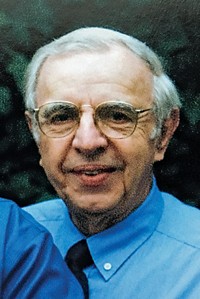Advertisement
Grab your lab coat. Let's get started
Welcome!
Welcome!
Create an account below to get 6 C&EN articles per month, receive newsletters and more - all free.
It seems this is your first time logging in online. Please enter the following information to continue.
As an ACS member you automatically get access to this site. All we need is few more details to create your reading experience.
Not you? Sign in with a different account.
Not you? Sign in with a different account.
ERROR 1
ERROR 1
ERROR 2
ERROR 2
ERROR 2
ERROR 2
ERROR 2
Password and Confirm password must match.
If you have an ACS member number, please enter it here so we can link this account to your membership. (optional)
ERROR 2
ACS values your privacy. By submitting your information, you are gaining access to C&EN and subscribing to our weekly newsletter. We use the information you provide to make your reading experience better, and we will never sell your data to third party members.
ACS News
Paul Crutzen
The atmospheric scientist showed how humans damage the ozone layer and climate
by Laura Howes
February 2, 2021

Paul J. Crutzen, who won the 1995 Nobel Prize in Chemistry for identifying how chemical processes created a hole in the ozone layer, died Jan. 28. He was 87.
Crutzen, a retired director of the Department of Atmospheric Chemistry at the Max Planck Institute for Chemistry (MPIC), shared the prize with Mario Molina and F. Sherwood Rowland, who are also deceased. Their work led to the Montreal Protocol, an international treaty that has helped reverse the destruction of the ozone layer.
Crutzen spent his career focusing on how human civilization impacts the environment. He described how nuclear war could lead to climatic cooling—a nuclear winter—and helped coin the term Anthropocene, an unofficial description of the current age where human activity dominates in shaping our planet’s ecosystems and climate.
Crutzen’s concern about climate change led him to suggest geoengineering, a proposal to employ technologies at the regional, continental, or planetary scale to cool the atmosphere,should be considered as remedy of last resort. That call led to significant pushback from other researchers who felt it was too risky to contemplate, but Crutzen helped break the taboo about discussing and studying the idea, says Mark Lawrence, scientific director of the Institute of Advanced Sustainability Studies.
Colleagues recall Crutzen as an excellent scientist and a warm human being who was generous with his time and expertise. Born in Amsterdam in 1933, Crutzen studied to be a civil engineer for financial reasons. In the late 50s he moved into academic research, joining the Department of Meteorology at Stockholm University as a computer programmer. While working, Crutzen took classes to complete a master’s level degree. He received his PhD in meteorology in 1968.
“I am deeply saddened by the death of Paul,” Jos Lelieveld, managing director of the MPIC, says in a statement. “His limitless scientific curiosity, creative ideas and his charismatic personality left their mark not only on me and our institution but on many generations of scientists.”
Crutzen joined MPIC in 1980 as director of the atmospheric chemistry department and built the department to be a major atmospheric science hub, researchers say. Geert Moortgat, now retired, was at the MPIC when Crutzen arrived. He remembers Crutzen as always interested in what other researchers were up to. Crutzen liked the “little puzzles” of science, Moortgat says.
After Crutzen retired in 2000, he stayed connected to the institute and continued to work in the field. Lawrence recalls Crutzen referring to his retirement as his “post-post-doc.”
Chemist Terry Dillon, who worked at the MPIC before moving to his current position at the University of York, says that “a number of my own projects, notably around potent greenhouse gases, were initiated by chats over a coffee with Paul.” Dillon adds that Crutzen liked to unwind by discussing European football and his “beloved Ajax,” the team of his Amsterdam birthplace.
Wouter Peters of Wageningen University also remembers Crutzen being open and approachable, even to Peters as a master’s student doing field work in Suriname. Laughing, joking, and even throwing a Frisbee around on the tarmac of the airport was not how he expected a Nobel Prize Winner to be, Peters says.
In increasingly ill health over the last few years, Crutzen stayed focused on the bigger picture, Lawrence says, concerned about topics like climate, air pollution, and the pandemic, but confident that curiosity-driven research and problem solving could help. “He was a truly great person and cared a great deal,” Lawrence says.
Crutzen is survived by his wife, Terttu, daughters Ilona and Sylvia, and three grandchildren.
Correction
This article was updated on Feb. 5, 2021, to correct the misspelling of Geert Moortgat's name.





Join the conversation
Contact the reporter
Submit a Letter to the Editor for publication
Engage with us on Twitter